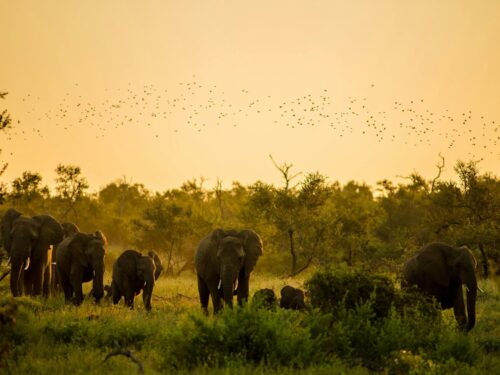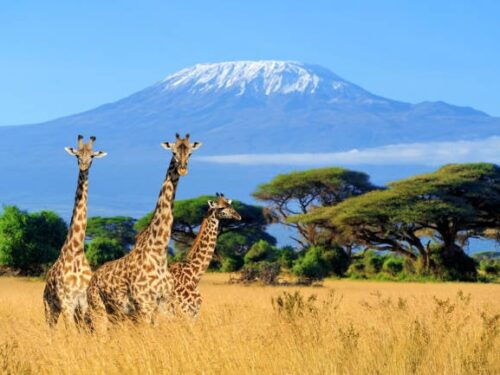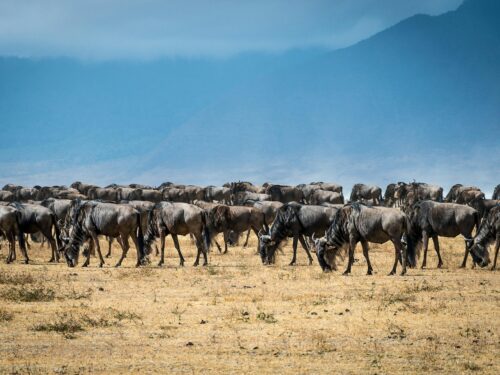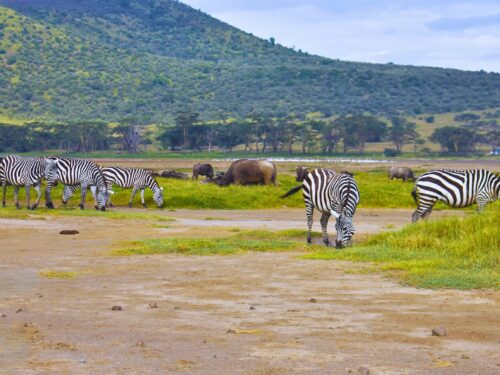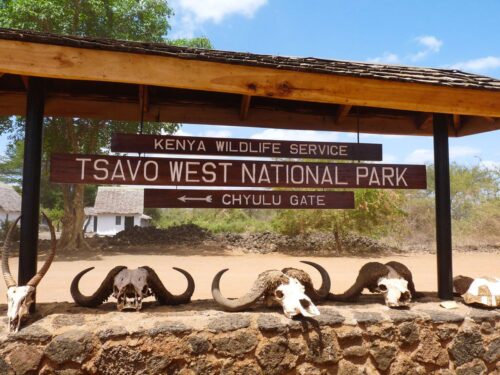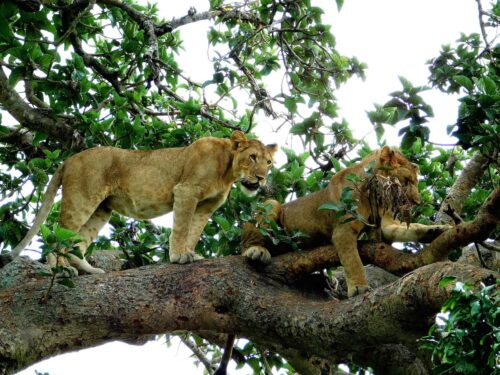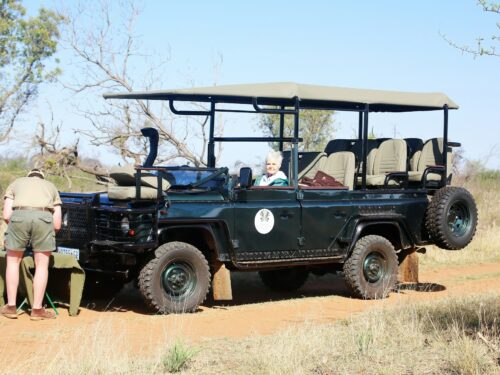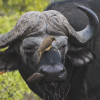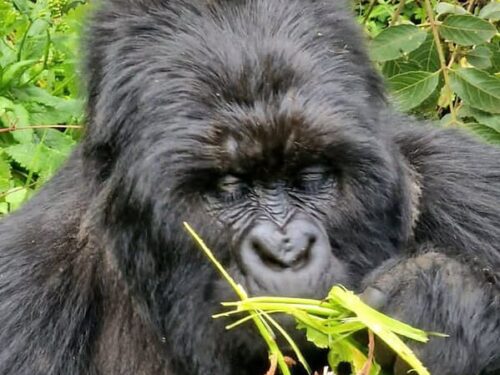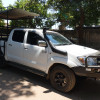Embarking on the journey to summit Mount Kilimanjaro is a dream for many adventurers, but the right gear can make all the difference between a successful climb and a challenging struggle. From hydration solutions to protective headgear, each item plays a crucial role in ensuring your safety and comfort throughout the expedition.
So, what equipment do you need to climb Mount Kilimanjaro?
In this comprehensive guide, we’ll break down the essential gear you need to pack for your Kilimanjaro adventure, including must-have items, optional accessories, and tips for making the most of your equipment.

What Equipment Do You Need to Climb Mount Kilimanjaro?
With the right gear and preparation, you’ll be ready to tackle the challenge of Mount Kilimanjaro and create lasting memories of a lifetime. Remember, while it’s essential to pack wisely, avoid overpacking to adhere to weight limits imposed by porters.
Here’s our complete Kilimanjaro gear list:
Bags
- A hydration bladder (or “camel bag”) is highly recommended for this trip. If your daypack is compatible with one, having one will surely add comfort to your trek. You should be very cautious and choose only high-quality models. Make sure that the pipe is insulated; otherwise, it might freeze on the summit night. 1.5—and 2-litre variations will be perfect for your trip.
- Travel bag organizers (optional). A highly recommended item that makes it comfortable to get all of your gear sorted inside a duffle bag. Also, using such organizers is helpful for keeping dirty and wet clothes apart from the clean ones.
Footwear is one of the most important items on your Kilimanjaro pack list. This is where you should be particularly attentive and selective. Choosing your hiking boots and/or sneakers is a task of supreme importance. A wrong choice here can result in broken toenails, corns and blisters. For this trip you will need high-quality hiking boots, trekking sneakers (optional) and trekking socks.
Hiking boots
Choosing appropriate hiking boots is probably of utmost importance. There are many options on the market, and sometimes it‟s hard to find the right one. Ideally, your hiking boots should meet the following criteria:
- Boots should have good ankle support.
- Boots should be of medium weight.
- Of course, your boots should be waterproof to keep your feet dry all the way up to the top. It is especially important in the summit area if you climb Kilimanjaro during the rainy season. Wearing high-quality trekking socks will provide extra protection, so it is always recommended to have a pair.
Preferably, laces should get fixed to the speed hooks for better comfort and protection. It is critically important to break in your boots before the start of your Kilimanjaro trip. Taking a pair of brand new boots will cause discomfort, sore soles and calluses. Therefore, it is highly recommended for you to wear your boots for about 5-6 days before the start of the trek. It is critically important to break in your boots before the start of your Kilimanjaro trip. You should take at least two long hikes to get them ready.
The brands of hiking boots that we recommend include: La Sportiva, Zamberlan, The North Face, merles, Asolo, Salomon and Scarpa. Any of these brands will be perfect for Kilimanjaro.
- Sneakers Optional
On some routes, the first days of your hike won’t be very steep, making it possible to use simple trekking sneakers instead of boots. On the following days, after arriving at your camp, you’ll probably want to take off your hiking boots and let your feet rest. That’s when sneakers might come in handy. They’ll be perfect for exploring the camp surroundings and to move between your tent and dining tents.
- Trekking socks
Trekking socks are a must on hikes like this. Do not pack cotton socks, as they will retain sweat and give you blisters. In contrast, woolen socks are a good option for Kilimanjaro – they will ensure fast and effective wicking. A brand to choose from is Bridgedale.
- Thermal socks Optional
Thermal socks are optional, but highly recommended, especially for climbs during the summer months. There are a lot of brands available on the market. The ones with flat seams, not made of cotton, will suit perfectly! Merino wool is a great alternative.
- Gaiters Optional
The use of gaiters on Kilimanjaro is not mandatory, but during the rainy season they are absolutely indispensable to prevent mud, snow or pebbles from getting inside the boots.
Hikers often think that gaiters are of little value. And yet, they do help to keep your trekking pants and boots clean during the trek, making your clothing more pleasant to put on. Also, the gaiters help to protect your more expensive membrane and trekking pants from the edgy rocks which are ubiquitous on Kilimanjaro.

Head-Gears
Like other trekking equipment categories, Kilimanjaro headgear has both mandatory and optional items.
- Sun hat
A sun hat is a must have on your packing list. Ideally, it should also have a neck cover (like this one). This headgear will protect your face from sunburns and overheating.
- Beanie
Taking a beanie is necessary for this trip. At higher elevation you’ll start feeling cold, so in order to keep your head and ears warm you will need a good beanie. It should be warm enough for the low temperatures and snowy conditions of the summit area.
- Balaclava Optional
Balaclava is a handy solution for hikers who are particularly susceptible to cold temperatures. A woolen balaclava will protect your chin, nose, cheeks and forehead from wind on the summit night. It is unlikely that you will be using it anywhere else.
- Neck warmer Optional
Many climbers find neck warmers very useful as they provide good protection to your neck and face if it gets very cold. It‟s also a good solution against dust.
- Sunglasses
When it comes to sunglasses, there are some key points to pay attention to. Firstly, sunglasses should provide good UV protection. At the elevation of 6,000 m above the sea level UV radiation is much higher than at sea level. Secondly, when choosing sunglasses, you should remember that snow in the summit area reflects light, thus putting extra strain on your eyes. Once near the summit, you should put your sunglasses on even if it is cloudy. Otherwise, you might develop a condition known as snow blindness. It is very dangerous and may cause permanent damage to your vision. Thus, make sure to choose a high-quality mountain model with 3 or, better, 4-level of UV protection.
- Headlamp
You can not hike Mount Kilimanjaro without a headlamp. Firstly, you’ll need it for moving around the camp after sunset when finding your tent can become quite a task. Besides, if you decide to go to the bathroom at night without a headlamp on, you could stumble upon the tent ropes. Secondly, a headlamp will be necessary during the summit. Normally, hikers start at midnight, aiming to reach Uhuru Peak by sunrise. So a headlamp will be a great help in seeing the path.
Please pay attention to the following points while choosing a headlamp for your trip:
- Check the quality of light. The brighter your headlamp, the more suitable it is for the trek. Optimally, the light output should be higher than 90-100 lumens and the beam distance should be at least 40-50 m.
- Buy good batteries. Ideally, the active mode should be around 30 hours. Otherwise, do not forget to take spare batteries or you can buy it here.
- Finally, your headlamp should not be too heavy. Since it is worn on the head, it should be relatively light. Thus, do not consider anything above 120 g.
- Avoid buying headlamps with rechargeable batteries. Their battery life is much shorter, and, most importantly, there are no power outlets on Kilimanjaro to recharge them.
PETZL provides good options – check them out.
Trekking poles
Trekking poles are a highly recommended item on your Kilimanjaro packing list, not only because it is a matter of comfort, but because of health concerns. High-altitude trekking is a strenuous activity that puts great strain on your knees and joints. The average daily hiking leg on Mt Kilimanjaro is 7-10 km, which takes 4-8 hours to complete.
The terrain is rugged and, at some points of the trek, rocky. This is where the trekking poles will help you to keep balance, adding two extra supporting points. The hikers also say that the trekking poles are beneficial on the summit night, especially when fatigue takes over them. That is why some people who do not use trekking poles complain about sore legs during and after the trip.
Good trekking poles will minimize the impact of a lengthy hike on joints, since part of your weight will be moved upon your hands and back, relieving your knees and other joints from extra stress.
While deciding on the trekking poles for your Kilimanjaro hike pay attention to the following:
- Ideally, your trekking poles should weigh around 400 g—not too heavy and not too light. Durability also matters—they should be able to endure lengthy hikes.
- As for materials, aluminum is the most optimal option to make the poles durable. Also, check the grip materials – in a high-quality pair of poles, grips are made of cork or foam. Cork is always a better option, as it feels more comfortable in the palm and doesn’t damage the palm skin.
- Also, remember that the trekking poles should match your height. Apart from adjustable models, there are special models for tall people and for kids.
Black Diamond is known for having the finest collection of trekking poles. Good trekking poles are exactly what you need to minimize the impact of a lengthy hike on your knees and joints.
Gloves You will need two types of gloves for this adventure – light inner gloves and warmer outer gloves for the summit night. Both types of gloves are essential for your Kilimanjaro trip.
Lightweight gloves are meant to keep your hands warm starting from the second day of your expedition. Most hikers wear them until the summit camp and then put on their outer gloves. Inner gloves should be made of good-quality materials, the best options being wool, polartec or synthetics. Avoid buying cotton gloves—they are not suitable for Kilimanjaro because of their poor wicking capacity.
You will also need warm gloves or mittens for the summit night. They should be warm and waterproof, while comfortable to use. Mittens are better – the summit usually takes around eight hours, and all the time you will be holding trekking poles in your hands. Because of that, it is imperative to keep them warm at -15°C / 5°F (lowest temperature in the summit zone).

Sleeping bag for Kilimanjaro
No matter which season you are climbing Mount Kilimanjaro, a sleeping bag will be necessary in any camp and on all routes.
Your sleeping bag should be warm. To begin with, your sleeping bag has three temperature levels.
- “Comfort level” means the temperature at which you can sleep comfortably in your sleeping bag with only your thermal underwear on.
- “Limit level” stands for the temperature when you can use your sleeping bag while wearing some layers of extra clothes. Sleeping bags should not be used in conditions beyond that temperature limit.
- “Extreme level” means the temperature at which a sleeping bag can be used as an emergency measure to save a climber from hypothermia until the emergency services arrive.
It is very cold at night in the upper camps of Kilimanjaro. Thus, the comfort level of your sleeping bag should be at least -10°C / 14°F. If you can get a sleeping bag warmer than that, you won’t regret it! No one has ever complained that it was too hot in his or her sleeping bag.
Ideally, your sleeping bag should have a hood to cover your head for better sleep at night. Our Kilimanjaro recommendation is Lamina Z Blaze (Comfort Level -15°F / -26°C) by Mountain Hardwear and The North Face sleeping bags.
- Sleeping bag liner Optional
A sleeping bag liner will add extra warmth on the final days of your climb. Mummy-shaped liners are better than rectangular ones. Either a fleece or an insulated liner will be great for your Kilimanjaro hike. A good liner can add from 3 to 8°C to your sleeping bag comfort level, which enables you to take your own sleeping bag if it does not match the -10°C comfort level requirement.
- Inflatable pillow Optional
An inflatable pillow will be of great use for those who like reading in a tent. At the same time, however, you may put your back pack or some clothes under your head to make an improvised pillow.
- Personal & Medical items Optional
Wet wipes will help maintain personal hygiene if you decided to climb Kilimanjaro without hiring a personal portable shower. Take two packs – put a small one into your daypack to use on the way, and a larger one will go to the duffel bag to be used for the evening hygiene. Suncream. Without it the open parts of your hands and face will easily get sunburnt. Personal medication – you should definitely bring any medicine you may require such as nausea, headache, stomachache, etc. Remember that some of the pills that you can easily buy in the home countries might be unavailable in Tanzania.

Optional Gadgets
Some of the gadgets that will be useful on your Kilimanjaro trip are:
- Camera
The scenery opening from Mt Kilimanjaro is truly spectacular! Taking great pictures is one of the main reasons people sign up for this trip. You may take a smartphone with a power bank or a Go-Pro camera with spare batteries to capture the most fantastic moments of your adventure. - Power banks
As said above, if you are taking any gadgets with you, taking a power bank is a must. There are no power outlets on Kilimanjaro, and it is the only way to keep your smartphone, e-reader or other devices charged. - E-book
For those who like to read before going to sleep, it is a must-have item in the packing list. - Mp3 Player
This will make your Kilimanjaro Trek truly great, especially on the summit night. Your favorite songs will certainly keep up your spirits and make the moments on the top of Africa even more wonderful. (Optional)
REMEMBER: Communal equipment (tents, food, utensils, etc.) is provided. You are responsible for bringing the required, recommended and optional personal gear and equipment listed. The most common mistake that climbers make is that they overpack. Be selective in what you take with you. Our porters are limited to carrying 33 lbs. (15 kgs) of your belongings.
NOTE: These items can be rented on location – payable in USD cash only. There is a general ban on plastic bags in Tanzania, but Tourists are permitted to use Ziploc-type bags.
Book Your Mount Kilimanjaro Climb with Kili Climb Africa Safaris
As you prepare for your Kilimanjaro adventure, consider booking your climb with Kili Climb Africa Safaris, one of Africa’s leading adventure specialists. With a reputation for reliability and a deep understanding of Western culture and needs, Kili Climb Africa Safaris is committed to providing exceptional personalized services at an affordable budget.
Founded by a team of professional safaris and mountain experts, Kili Climb Africa Safaris offers authentic cultural experiences based on local knowledge and Tanzanian sensibilities. Our guides, born and raised in Africa, provide true narrations and deep insights that enrich your journey and make it truly unforgettable.
When you choose Kili Climb Africa Safaris, you connect directly with knowledgeable guides who are experts in the destinations you’ll explore. Whether you’re traveling solo, with friends, or as a family, we can customize a trip to suit your preferences and provide an authentic local experience.
With climbs on various routes ranging from 4 to 9 days, Kili Climb Africa Safaris ensures a safe, memorable, and rewarding journey to the summit of Kilimanjaro. Book your adventure with us and embark on the experience of a lifetime.
Get in touch with Kili Climb Africa Safaris to book your Kilimanjaro Climb:

